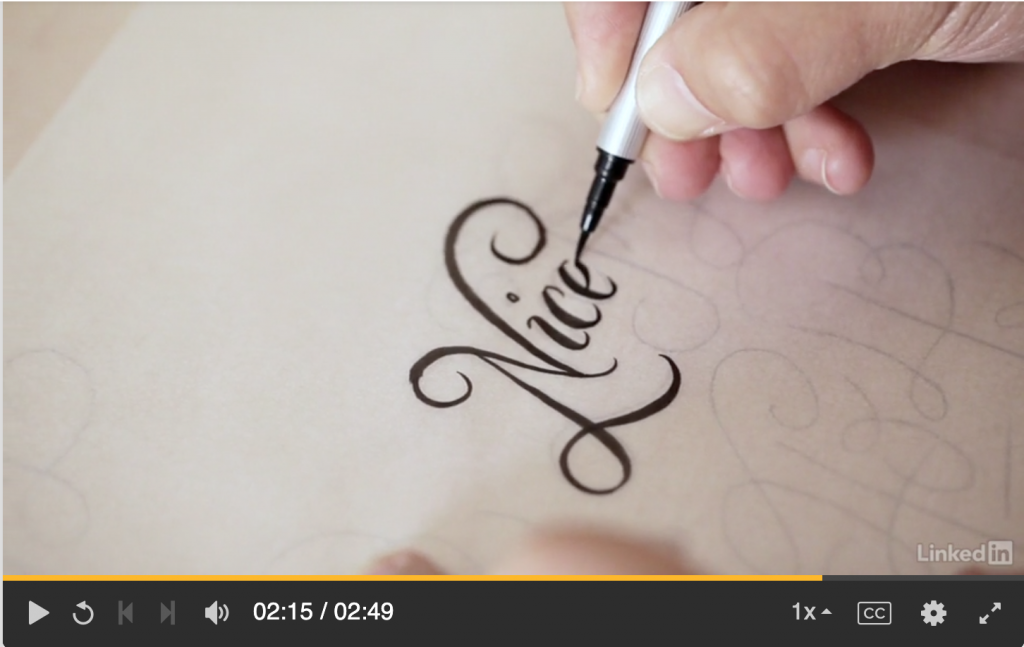Table of Contents
Class Info
- Date: Tuesday, August 29
- Meeting Info: P125
- Topics: Learn about the definition of design and breakdown of the design process. Begin learning basic elements of design, including:
- Points
- Lines
- Shapes
- Texture
- Scale
To-Do Before Class
- If you haven’t already, create an OpenLab account and then join our course.
- Post a comment in the Introductions discussion.
- Review the Course Info: Syllabus, Grading Policy, Supply List, Contact & Communications
Materials Needed Today
- sketch book (9″x12″)
- graphite pencils (6B, 2B, HB, 2H, 4H)
- pencil sharpener (basic metal)
- small box/container for your supplies (find or reuse)
Discussion: What is Design? The Process & Elements of Design
What is Design?
To design is to plan or arrange elements in order to communicate a thought, feeling, or concept. Design can also be described as the organization of information. This information can be visual, aural, informational, or tactile.
The products of design are compositions — arrangements of elements. We will focus primarily on the arrangement of visual elements in this course, but we will also consider how all our senses affect how we interact with and understand the world.
Why Learn Design?
A good designer, independent of the medium (data, sound, pixels, paint, wood) has a significant advantage in the world. If you choose a design career and develop your creative vision, you can influence what people see/feel/do.
“We can change the world, only once we accept that it’s the everyday, mundane work of design that has the potential to stir change. And it’s the everyday work of a designer that requires your focus, your intuition, your curiosity, your love.”
Bill Chung, On design changing the world
What Kind of Careers?
There are many interesting opportunities for designers, but learning how to think creatively is useful for every career. Here are some careers that our Communication Design program can prepare you for:
- Graphic Design
- Advertising Design
- User-Experience Design
- Interface/Web Design
- Information Design
- Animation/Motion Graphics
- Broadcast/Video
- Photography
- Illustration

[Access with NYPL card]
How do you become a good designer?
First you must learn the fundamental principles. When building a sturdy house you need a strong foundation. When learning a new language you need to master grammar and vocabulary. It takes patience, attention to detail, dedication, and most importantly, staying curious.
What is curiosity?
Curiosity, in this context, is desire to learn more. Good designers are inquisitive investigators with a strong internal motivation to solve problems. Designers love a challenge. They use all of their senses to find inspiration and solutions to design problems. Like a scientist they research, experiment, get feedback, and repeat– until they arrive at the best solution to the design problem they face. Their first idea is rarely the best solution. A good designer follows a design process and practices design thinking.
What is a Design Process?
A Design Process is the workflow a designer uses. Following a clear design process gives structure to a design problem and helps to bring an idea from conception to final delivery. It is especially helpful when collaborating with others. Incorporating design thinking into the design process helps designers to understand the needs of those you are designing for.
The primary design process we will follow in this class is:
Discover: Ideation and Experimentation
Define: Iteration and Feedback
Develop: Refine and Execute
Deliver: Professional verbal, written, and visual presentation; critical reflection
Discussion: Vocabulary
Point – Takes form of visible mark or dot. Fundamental building block of all visual communication elements and principles.
Line – Composed of a number of points; a continuous mark applied to a surface.
Shape – Defined by boundary and mass; refers to contour or outline of a form
Texture – The look and feel of any surface; adds dimension
Space – Refers to distance or area related to other elements. Distance, area, and volume
Breakout Lab (60 min)
- Project #1: Line Pattern Design
- Exercises with circles and lines. Draw 6 squares. In three squares, create designs using circles. In the last three create designs using lines. Play and experiment.
To-Do Before Next Class
- Listen to a piece of music and sketch out patterns and textures. Check the Discover part of Project 1.
- Post a new image to the Visual Library that demonstrates the vocabulary learned in class.
Materials needed for NEXT CLASS
Items from SUPPLY LIST**
- Dropbox/Google Drive access.
- sketch book (9″x12″)
- Tracing Paper (9”x12” )
- graphite pencils (similar 6B, 2B, HB, 2H, 4H)
- pencil sharpener (basic metal)
- small box/container for your supplies (find or reuse)
- Pigma Micron inking pens + big brush Set
- portfolio to protect your work
- 1 roll drafting or removable tape
- metal ruler
** Note: if you are unable to purchase these items due to financial aid delays, please contact me BEFORE the next class.



